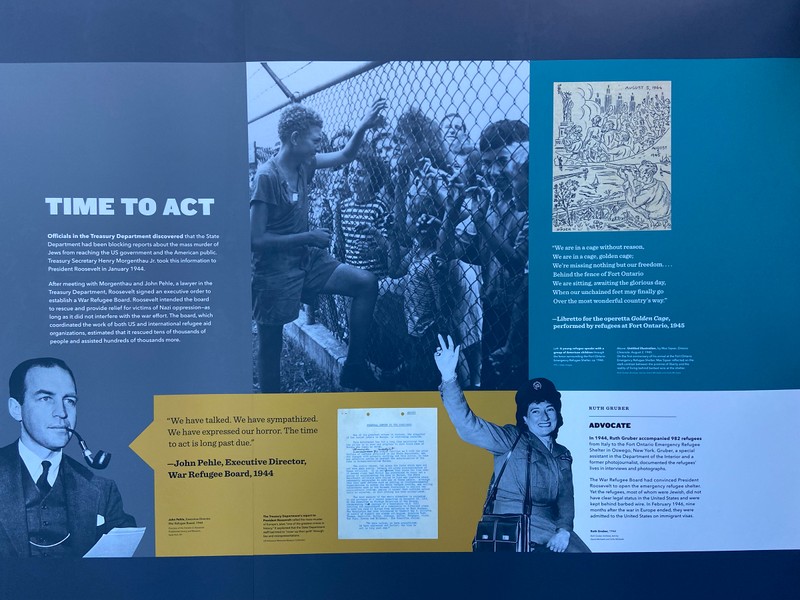Time to Act (Americans and the Holocaust)
Introduction
Author-Uploaded Audio
Time to Act (Americans and the Holocaust)
Text-to-speech Audio
In January 1944, the US Treasury Department argued to President Roosevelt that the State Department had failed to try to rescue Jews—and, in fact, had been lying about rescue efforts. Roosevelt agreed to create a new government agency tasked with trying to rescue Jews and other victims and put Treasury Department officials in charge. So in early 1944, the United States announced the first official policy about the Holocaust, and it was a policy of rescue.
The War Refugee Board—the name of this new agency—put pressure on other countries to do more, tried to help Jews escape Nazi territory, and sent humanitarian aid into Europe. By the end of the war, they had saved tens of thousands of lives. They also opened a refugee camp at Fort Ontario, an army base in Oswego, New York, and brought nearly 1,000 mostly-Jewish refugees to live there. This is the only group of people fleeing the Holocaust to enter the United States outside of US immigration laws. Although they were permitted to come here, they had to live at the fort surrounded by a barbed wire fence. Finally in January 1946, eight months after the end of World War II in Europe, the refugees were permitted to enter the US as new immigrants.
Images
Time to Act panel (Americans and the Holocaust)

Backstory and Context
Text-to-speech Audio
Metropolitan Library System is one of 50 U.S. libraries selected to host AMERICANS AND THE HOLOCAUST, a traveling exhibition from the U.S. Holocaust Memorial Museum that examines the motives, pressures, and fears that shaped Americans’ responses to Nazism, war, and genocide in Europe during the 1930s and 1940s.
The Americans and the Holocaust exhibit will be on display at the Downtown Library, along with a series of related special events from Thursday, January 5 to Sunday, February 12.
Based on extensive new research of that period, Americans and the Holocaust addresses important themes in American history, exploring the many factors — including the Great Depression, isolationism, xenophobia, racism, and antisemitism — that influenced decisions made by the U.S. government, the news media, organizations and individuals as they responded to Nazism. This exhibition will challenge the commonly held assumptions that Americans knew little and did nothing about the Nazi persecution and murder of Jews as the Holocaust unfolded.
Drawing on a remarkable collection of primary sources from the 1930s and ’40s, the exhibition focuses on the stories of individuals and groups of Americans who took action in response to Nazism. It will challenge visitors to consider the responsibilities and obstacles faced by individuals — from Franklin Delano Roosevelt to ordinary Americans — who made difficult choices, sought to effect change, and, in a few cases, took significant risks to help victims of Nazism even as rescue never became a government priority.
Americans and the Holocaust was made possible by the generous support of lead sponsor Jeannie & Jonathan Lavine. Additional major funding was provided by the Bildners — Joan & Allen z”l, Elisa Spungen & Rob, Nancy & Jim; and Jane and Daniel Och. The Museum's exhibitions are also supported by the Lester Robbins and Sheila Johnson Robbins Traveling and Special Exhibitions Fund, established in 1990.
Sources
United States Holocaust Memorial Museum. Accessed January 5th, 2023. https://www.ushmm.org/.
American Library Association. Accessed January 5th, 2023. https://www.ala.org/.
